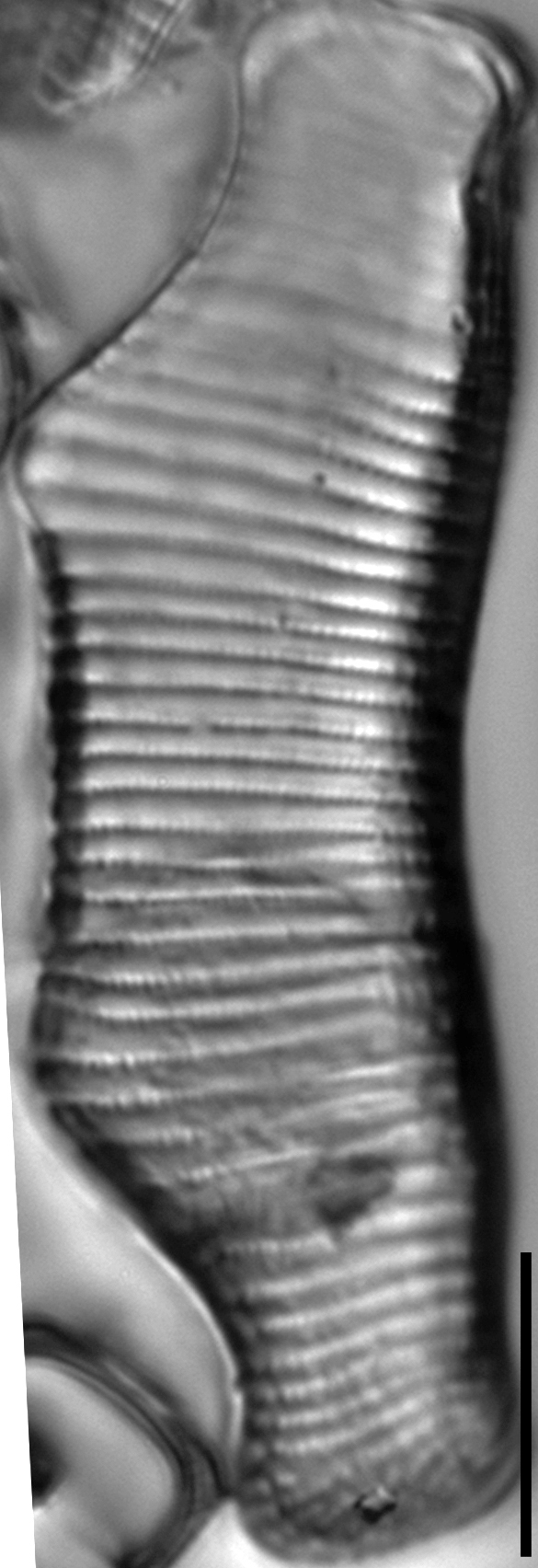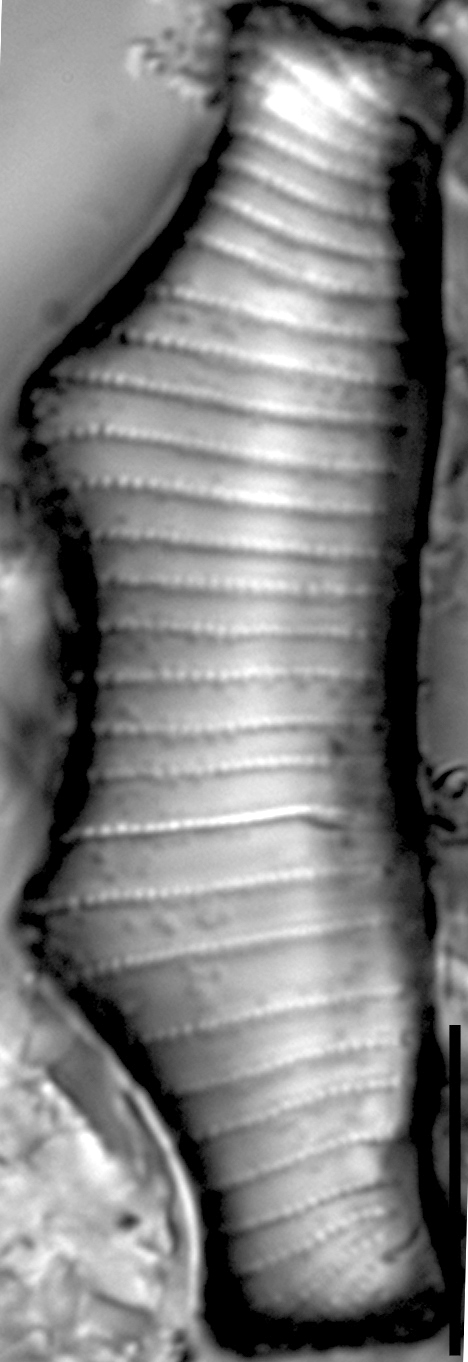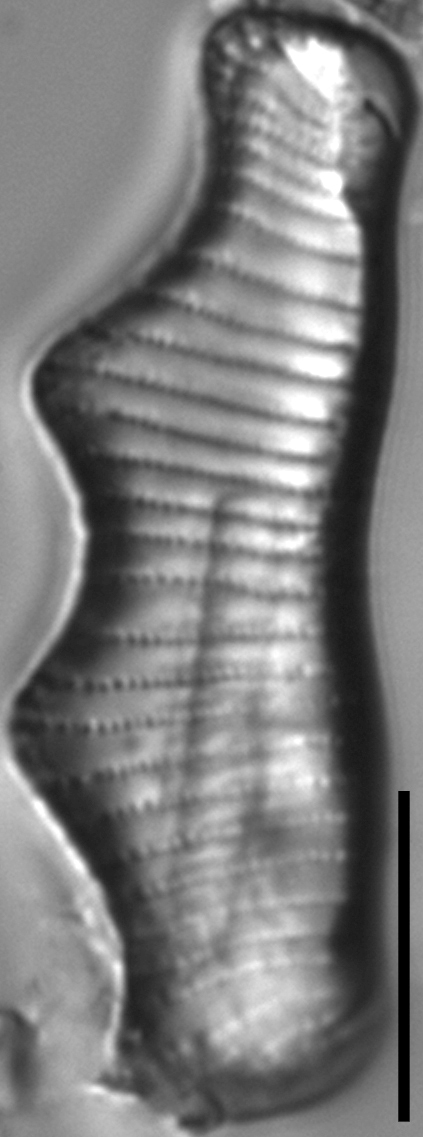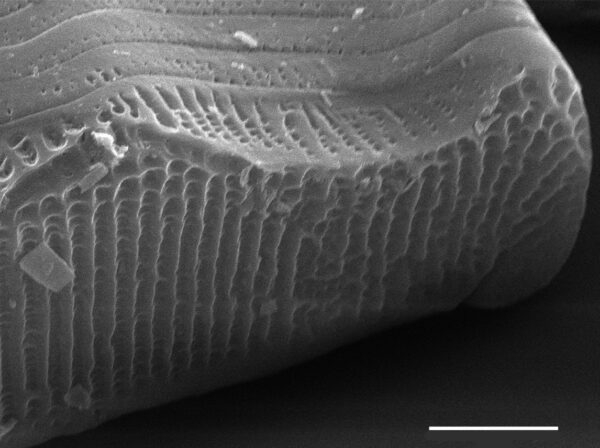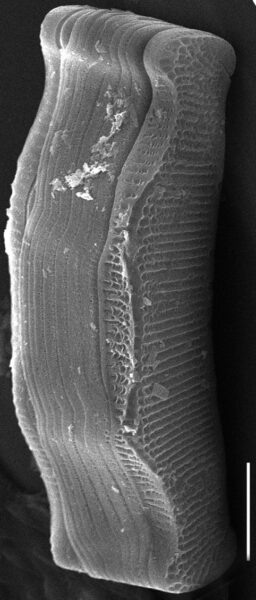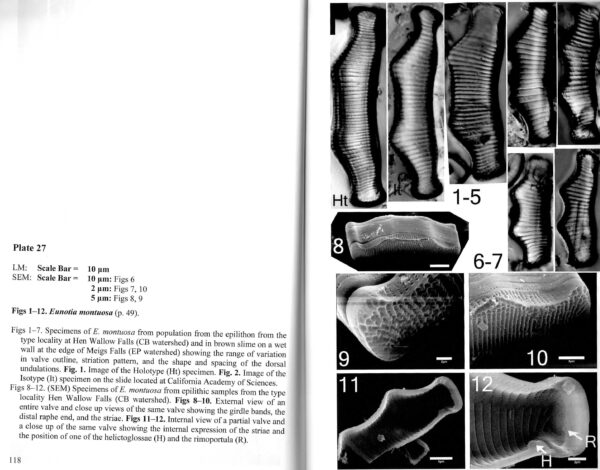Eunotia montuosa
-
Category
-
Length Range31-59 µm
-
Width Range7-13 µm
-
Striae in 10 µm7-9 in the center valve, 10-14 at the ends
-
ContributorPaula Furey - Feb 2011
-
ReviewerMarina Potapova - Mar 2011
Identification
Description
The ventral margin is slightly concave with subapical swellings at the proximal raphe ends. The dorsal margin is strongly biundulate with acutely pointed peaks. The valve apices are constricted, dorsally recurved and apically flattened. Helictoglossae are not visible in the LM. One apical rimoportula is positioned at the center of the apex (visible in SEM). The distal ends of the raphe are slightly curved and clearly visible in the LM. Striae are radiate. Short, radiate striae are present distally to the distal raphe ends. Aerolae within a stria number 24-28 in 10 µm.
Autecology
To date, Eunotia montuosa has been found in low abundance in epilithic samples from Hen Wallow Falls and in brown slime on a wet wall at the edge of Meigs Falls in the Great Smoky Mountains National Park.
-
Size Range, µm3
-
Motility
-
Habitat
-
Waterbody
- Learn more about this
Original Description
Valves slightly concave with subapical swellings on the ventral margin, strongly biundulate with acutely pointed peaks on the dorsal margin, 31 – 59 μm long, 7 – 13 μm wide. Ends attenuated, constricted, dorsally recurved, truncated and apically flattened. Helictoglossae not visible in the light microscope. Rimoportula at one end of valve, at the center of the apex. Raphe with distal ends slightly curved and clearly visible in the light microscope. Striae radiate, with abbreviated radial striae at the apices after the last transverse stria, 7 – 9 in 10 μm in the valve center, 10 – 14 in 10 μm near the valve apices. Puncta 24-28 in 10 μm.
-
AuthorFurey, Lowe and Johansen 2011
-
Length Range31-59 µm
-
Width7-13 µm
-
Striae in 10µm7-9 in the center valve, 10-14 at the ends, puncta 24-28
Cite This Page
Furey, P. (2011). Eunotia montuosa. In Diatoms of North America. Retrieved April 26, 2024, from https://diatoms.org/species/eunotia_montuosa
Responses
The 15 response plots show an environmental variable (x axis) against the relative abundance (y axis) of Eunotia montuosa from all the stream reaches where it was present. Note that the relative abundance scale is the same on each plot. Explanation of each environmental variable and units are as follows:
ELEVATION = stream reach elevation (meters)
STRAHLER = distribution plot of the Strahler Stream Order
SLOPE = stream reach gradient (degrees)
W1_HALL = an index that is a measure of streamside (riparian) human activity that ranges from 0 - 10, with a value of 0 indicating of minimal disturbance to a value of 10 indicating severe disturbance.
PHSTVL = pH measured in a sealed syringe sample (pH units)
log_COND = log concentration of specific conductivity (µS/cm)
log_PTL = log concentration of total phosphorus (µg/L)
log_NO3 = log concentration of nitrate (µeq/L)
log_DOC = log concentration of dissolved organic carbon (mg/L)
log_SIO2 = log concentration of silicon (mg/L)
log_NA = log concentration of sodium (µeq/L)
log_HCO3 = log concentration of the bicarbonate ion (µeq/L)
EMBED = percent of the stream substrate that is embedded by sand and fine sediment
log_TURBIDITY = log of turbidity, a measure of cloudiness of water, in nephelometric turbidity units (NTU).
DISTOT = an index of total human disturbance in the watershed that ranges from 1 - 100, with a value of 0 indicating of minimal disturbance to a value of 100 indicating severe disturbance.
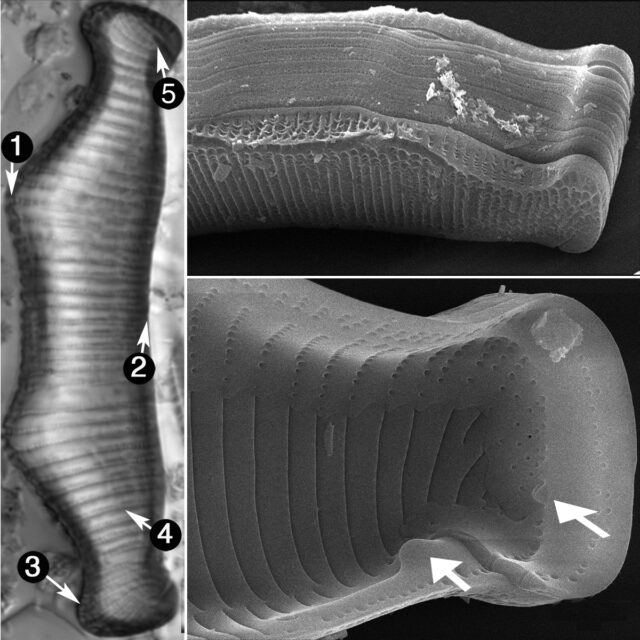
Eunotia montuosa
- Dorsal margin biundulate
- Ventral margin concave
- Ends dorsally recurved
- Striae radiate
- Shorter, more radiate striae distal to raphe ends
The dorsal margin is strongly biundulate with two acutely pointed peaks. The ventral margin is slightly concave with subapical swellings. The valve ends are dorsally recurved and apically flattened. Striae are radiate. Shorter, more radiate striae are present distally to the distal raphe ends. The distal raphe is slightly curved and...
 Diatoms of North America
Diatoms of North America

